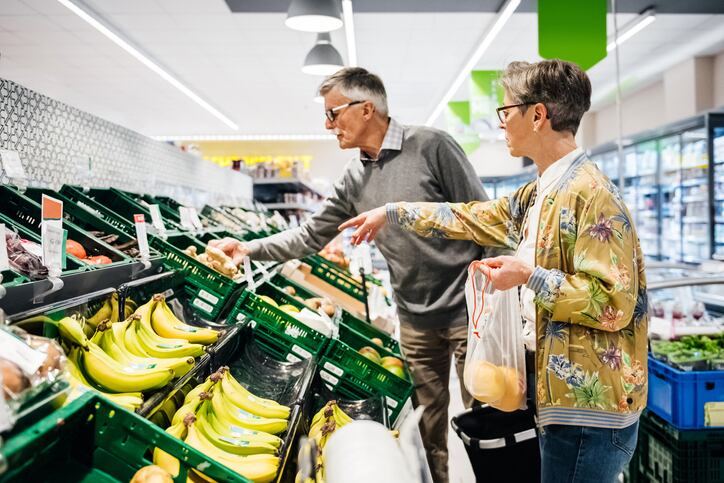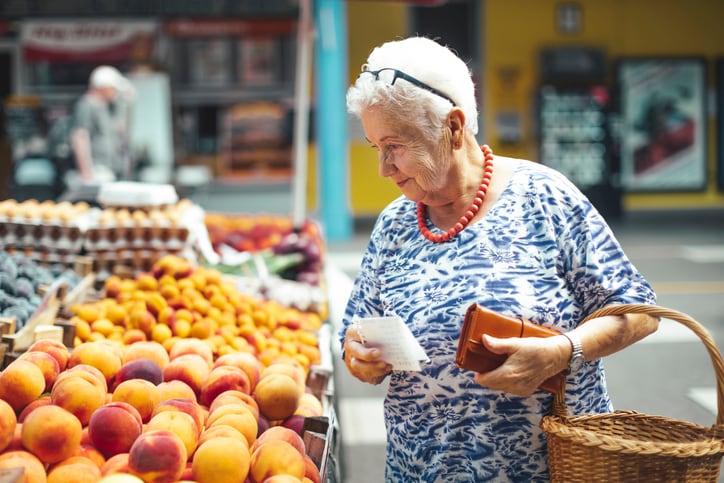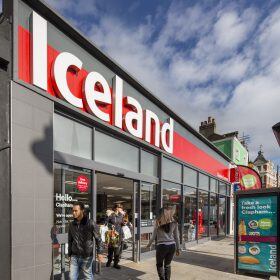‘The State of Grocery Retail 2022’ report is based on interviews with 60 European grocery CEOs and a survey of more than 12,000 consumers across nine European countries.
It reveals that in the short term, the impact of the invasion of Ukraine as well as inflation and energy costs are top of mind for CEOs, putting even stronger pressure on prices and operational efficiency, along with the wellbeing of employees.
Even before the impact of the Ukraine invasion on energy prices and cost of certain key commodities, grocery retailers expected market conditions to worsen in this year. This reflected the drop in sales after the effects of the pandemic receded, pressure on pricing and competition (including from a maturing online market). Inflation was already creating real challenges to grocery retailers in Europe. Is now exacerbated by the Ukraine invasion and likely to further intensify consumer price sensitivity.
Future trading will feature increased margin pressure on grocery retailers, the report warned, with the need to cater for broader consumer demands, growing price pressure and increasing multi-channel complexity.
Strong pressure on margins, with households seeking cheaper alternatives and promotions
European CEOs expect inflation and downtrading to be the predominant trends in 2022, the report revealed. Overall inflation in the European Union reached 5.6% in January 2022, while food prices rose 3.5%. These changes will likely be accelerated by the invasion of Ukraine. For grocery retailers, inflation has two primary effects: costs increase, and consumers’ disposable income shrinks.
Performance of listed EU grocers during historical high inflation periods has been stable. From 2007 to 2008, for example, food price inflation had little effect on grocery’s profitability, because retailers were able to partly pass along rising prices from suppliers to consumers. By contrast, inflation during 2011 and 2012 led to a small reduction in margins. This time, heightened price sensitivity among low-income consumers, combined with decreasing overall volumes and competitive markets, might make it more difficult for retailers to pass on price increases, the report warned. To avoid further losses in volume, it suggested, some retailers might opt to delay part of the price increases, resulting in lower margins, at least temporarily.
A K-shaped recovery in consumer demand
There is increasing polarization between low- and high-income consumers regarding attitudes toward price, health, quality, and environment, the report observed.
The growth of healthy, premium, and sustainable products is likely to accelerate even more. This will be fuelled primarily by high-income consumers, younger generations (particularly Gen Z), and larger households (those with more than three people). On the other hand, the share of consumers who plan to save more money on food and trade down to cheaper products also has risen substantially compared with 2021. Lower income consumers are the driving force behind this increase.
In response, grocers could consider trimming the middle of their assortments and further strengthening their entry-price offerings and premium assortment, the research suggested. Adjusting the assortment to the specific needs of a store’s catchment area will become even more important.
The report also identified slower online growth with more differentiated offers. Consumers are splitting their purchases across an ‘increasingly fragmented online market with new emerging offerings’.
Many retailers are tapping into new revenue streams beyond their core
On a more positive note, with their core business under pressure, many retailers are looking for new profit pools— either within their core business, through advanced analytics and artificial intelligence, or outside of their core, by entering new revenue streams (e.g. using loyalty card data to sell advertising space).
Here lies plenty of untapped potential, the report noted. Recent breakthroughs in the field of personalised offers and localized, store-specific assortment, for example, could bring a new wave of value that can be captured to improve sales and profitability.
But skills and talent is a growing challenge
Talent has become a bottleneck for many retailers, however. Some 39% of grocery CEOs see attracting the right talent as one of their key challenges. In addition to high employee attrition in grocery retail, demand for different skills—such as social-emotional skills and advanced analytical and technical skills—went up.
To win in this future landscape, attracting and retaining the right talent while ensuring availability of key skills becomes critical. To compete, retailers may want to adjust their people models to strategically plan and manage for the required skills for the next three to five years, ensure workforce retention, and offer a robust reskilling programme, the analysis recommended.
'Be bold be brave'
The market environment in the next 12 to 18 months might be difficult, the research emphasised, and retailers ‘must be prepared to take bold actions and keep investing in key areas such as online, new profit pools, analytics, sustainability, and people’. Some of these actions are not new, but some factors, such as the divergent demands from low- and high-income consumers and more differentiated offerings in the online market, are increasing the complexity of the challenges facing retailers.
It will therefore be vital for retailers to strengthen their distinct offerings tailored to these different needs—for example, through rebalancing the price tiers, building up private labels, making assortment and prices more store-specific, and personalizing promotions. Retailers will also likely benefit from exploring new revenue sources (such as retail media networks) by monetizing their traffic and data.
Daniel Läubli, Global Head of Grocery Retail at McKinsey, said: “Having prospered through the pandemic, Europe’s grocers are facing a tough year ahead. Inflationary pressure, price sensitivity and increased competition are poised to reverse many of the positive trends they have experienced. On the other hand, these changes also offer opportunities for grocery retailers that take bold actions and keep investing in a great private label offering, online, new profit pools, healthy and sustainable products, as well as people.”
Christel Delberghe, Director General of EuroCommerce, said: “Retailers provide an essential service to consumers and can offer a strong basis for the European economy as Europe’s largest private employer. They are facing new challenges arising from increased competition and spiralling costs in many parts of their business: the energy they use to run their stores and logistics, suppliers seeking to pass on the rising cost of their inputs, and disruption in supply of certain products. Retailers will need to find the resources to invest and remain competitive in the digital, sustainability and skills transformation of their business models."





